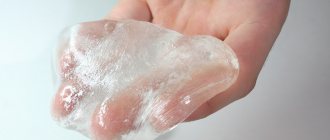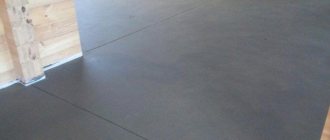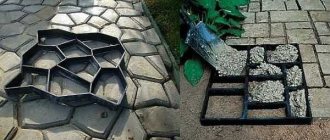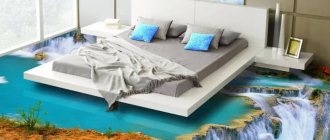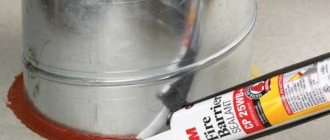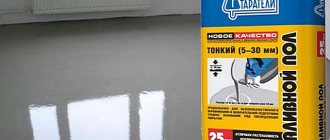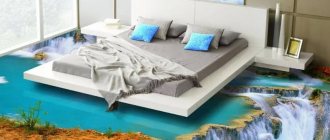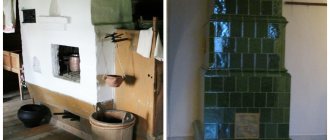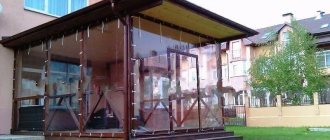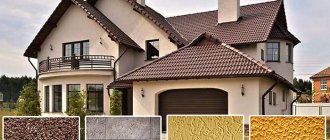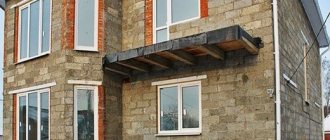The impact of negative external factors on the concrete surface leads to a deterioration in the technical characteristics of the coating. The use of liquid glass in concrete will help increase the resistance of the constructed or finished structure to the negative effects of precipitation, sudden temperature changes and other factors, under the influence of which the properties of concrete surfaces significantly deteriorate. Before you start using such a protective mixture, it is recommended to study its technical characteristics, preparation rules, as well as the pros and cons of use.
What does it represent?
In classic concrete mixtures, the main components are:
- sand;
- cement;
- crushed stone
Adding liquid glass to the mortar will help increase the service life of the structure.
By adding water to the dry composition, it will be possible to obtain a durable building material for pouring a foundation, concrete floor, as well as erecting structures for various purposes. However, sometimes the physical and technical properties of such concrete are not enough for the structure to reliably perform its functions. To improve the technical characteristics of the solution, a special concrete additive based on liquid glass is used. The result is a reliable coating that is resistant to negative external factors, thanks to which the structure will last much longer than the stated period.
Composition with a binder - glass
The scope of application of this material is industry. Produced industrially, it is resistant to aggressive acids and has a negative reaction to aggressive alkalis. The stages of industrial production include:
- Sorting of glass mass.
- Particle crushing.
- Glass crushing.
- Division into factions.
The coarse filler is elements larger than 5 millimeters, and the rest, smaller ones, can be used instead of sand. If you have a thin glass fraction, you can prepare such a filling yourself.
Glass concrete is widely used and, due to its properties, is in great demand for the production of finishing panels, gratings, fences, walls, partitions
Astringent properties are provided by the introduction of a catalyst, since glass powder when mixed with water does not provide astringent characteristics. The manufacturing technology involves dissolving cullet with alkali - soda ash. During the reaction, the resulting silicon acids are gradually transformed into a gel, which holds the filler together and hardens. The result is a durable conglomerate with acid-resistant properties and increased strength.
The distinctive characteristics of such concrete, which exceeds traditional materials in many respects, are:
- biostability;
- increased thermal conductivity;
- resistance to acids, which is important for acidic reaction of foundation soils.
Material properties
Using liquid glass in concrete allows you to achieve the following results:
- Increase moisture resistance. Such protection is necessary for structures that are constantly in contact with water. This could be a swimming pool, a damp basement, tanks, well rings, etc.
- Accelerate hardening. If you prepare a classic concrete solution using impregnation, the time for hardening of the finished composition will be much reduced. 24 hours will be enough for the surface to become ready for further construction work, while a regular mortar takes 3-5 days to dry.
- Increase waterproofing properties. Liquid glass for waterproofing concrete is added to prevent the appearance of mold and fungi on the surface. The fact is that the special composition of the product has a bactericidal effect, due to which microorganisms have no chance of developing and multiplying.
- Increase heat resistance. The surface on which ordinary concrete mortar is applied can withstand temperatures up to 200 °C; if it is higher, the plaster layer will collapse. But when you add liquid glass to the solution and treat the structure with it, it will be able to withstand temperatures of 1400 degrees or more. Therefore, when building a fireplace or stove, it is advisable to prepare a cement mortar with liquid glass.
Characteristics
ZhS is a material of a viscous, viscous consistency, which dries quickly in air and forms a monolithic, durable, water-impervious base.
Liquid glass, sodium and potassium, have the following characteristics:
- Prevents water from penetrating through the surface treated with the solution.
- Protects wooden and concrete surfaces from the penetration of fungus and pathogens.
- Prevents the accumulation of static voltage.
- Protects the treated surface from fire.
- Protects the base impregnated with the solution from the effects of acidic compounds.
- Helps accelerate the drying process and strength gain of cement mortars.
Application
The water-repellent properties of the material allow it to be used in the construction of pool bowls or for waterproofing foundations.
The scope of application of this high-quality material is extensive. The product is intended for the following purposes:
- Production of concrete with special characteristics, such as frost resistance, fire resistance, acid resistance.
- Waterproofing the foundation, if it is built in a place where groundwater is shallow.
- Waterproofing of walls, basements, floor screeds.
- Arrangement of pool bowls and well walls.
- Production of plaster with water-repellent properties.
- Production of fireproof mortar for plastering and sealing joints when installing fireplaces, stoves, and barbecues.
Waterproofing
Creating a water-repellent coating is a priority when choosing a material for pouring the base. Depending on the area of application of the cement solution and silicate glue, not only the recipe for preparing the mixture and the method of its application changes.
Waterproofing during foundation construction
Protecting the foundation from the negative effects of groundwater is the primary task of builders. When installing the foundation, a silicate solution is applied to the surface twice. This is a coating method of application, which is reliable and durable. After covering the foundation with a silicate solution, a waterproof rolled material is laid on top.
In this case, the waterproofing composition is prepared according to the following proportions:
- For 1 kg of cement add 50 grams of liquid glass.
- For 10 grams of silicate, 150 grams of purified water is required.
Waterproofing for swimming pool
The solution can be applied both from the outside and from the inside of the structure. Before using the silicate mixture, recesses and joints should be locally treated over the entire area of the pool. This will improve the sealing properties.
High-quality treatment with a silicate compound on the outside of the pool will protect the structure from being washed out by groundwater. Internal silicate coating is important due to constant contact with water Source kazan.blizko.ru
Waterproofing well walls
For such a coating, the simplest composition is prepared. All components are mixed in equal parts and diluted with water. By analogy with treating a swimming pool, before applying the solution to the walls of the well, coating defects and joints are first covered with it. Only after detailed processing is the entire working area coated.
Advantages and disadvantages
Liquid glass for concrete has a number of advantages, among which the main ones are:
- multifunctionality;
- increased adhesion;
- the formation of a shell on the surface that reliably protects the surface from ground and atmospheric moisture;
- reliable protection and strengthening of the treated structure;
- fast hardening times;
- easy preparation and application;
- affordable price.
The concrete mixture with the additive hardens quickly, so you need to work with it quickly.
However, before fermenting concrete with liquid glass, it is necessary to weigh the pros and cons, because in addition to the advantages, this method of protection also has disadvantages. The main ones are:
- It hardens quickly, which can make the pouring process more difficult because you have to work quickly.
- Narrow focus. It is advisable to apply the material for moisture protection purposes only on concrete and wooden surfaces. It is not suitable for other types of mortars.
- The need for strict adherence to proportions. If the instructions for preparing the mixture are not followed, the finished solution will be ineffective.
Types of liquid glass
The constituent elements are potassium or sodium silicate. It is impossible to create a rating based on the type of this element that is selected for production and the funds are divided, because they differ in a number of properties:
- The first element has a protective property against alkalis, has a high degree of adhesion, and does not form a glass sheen on the surface;
- The second creates the same protection, but shines.
There is a granular type; water is added to the composition before use.
The constituent elements are potassium or sodium silicate.
Preparation of the solution
Tools and materials
The technology for producing a concrete mixture with the addition of liquid glass is simple. You can make the solution yourself, but first you should prepare the equipment:
- container for mixing the solution;
- a special attachment for the drill, thanks to which you can quickly mix the components;
- brush, roller or spray;
- a level with which the horizontal or vertical of the surface being treated is controlled.
A solution with liquid glass is not made in a concrete mixer, because the solidification process occurs before the end of preparation.
A concrete mixer is not suitable for mixing the components of the solution, because the solution will begin to harden even before the end of preparation. Using a mechanical stirrer you can only combine all the materials, but without adding liquid glass. Then the required amount of impregnation is added and mixed manually. Materials you will need:
- cement;
- sifted sand;
- pure water.
Application of liquid glass by coating method
The coating method is considered the simplest. It can be done using a roller, brushes or spray gun. Proceed as follows:
- Clean the surface and degrease. Concrete must be brushed to obtain an even coating.
- For a concrete surface, usually 1 layer of the product is sufficient; if a deeper finish is necessary, more layers are made, each one must stand and dry until the next half hour to forty minutes.
For a concrete surface, 1 layer of the product is usually sufficient.
Calculations and proportions
In order to correctly calculate the proportions of liquid glass in the total mass of the solution, it is important to determine over what period of time the composition should harden. Based on this criterion, it is recommended to study the table:
| Liquid glass consumption, % | Initial setting, min. | Final hardening, hour. |
| 2 | 40—45 | 20—24 |
| 5 | 25—30 | 14—17 |
| 8 | 10—15 | 6—8 |
| 10 | 5—10 | 2—4 |
The common ratio of cement, sand and liquid glass impregnation is:
A waterproofing coating with a special additive must be prepared by diluting it in one liter of water.
- To make a reliable waterproofing coating, you need to dilute liquid glass in 1 liter of water.
- To obtain a universal-purpose plasticizer, you need to mix cement and sand (proportion 1:3), then add silicate material to them with a volume of 1/5 of the total mass.
- If you need to cover and impregnate a finished plastered surface, water and liquid glass impregnation are mixed in a ratio of 5:1, respectively. Then the prepared solution must be applied to the concrete.
- To prepare a fire-resistant mortar, up to 5% silicate impregnation is added to the standard cement-concrete mixture.
Lifehack for gluing glass
Before we talk about how to glue glass to glass, we need to mention the importance of surface preparation. It is cleaned of grease and dirt using a solvent or a special cleaner.
Before starting the procedure, the exact fit of the parts is checked.
After this, before applying the composition, the surface must be heated to a temperature that will be approximately 30 degrees above room temperature.
Regardless of whether you use optical glue or any other, you need to apply it in a minimal amount. Afterwards, the parts are glued together for the time specified in the instructions, usually 60-120 seconds. If UV glue was used, the connection is additionally trained.
Restoring your favorite glass item is not difficult if you approach the repair correctly. But which glue for glass is better, everyone decides for himself. Among the many different compositions and brands, experts prefer UV, and ordinary people prefer the usual Moment. It will be doubly pleasant if you share your experience in the comment below.
–Tags
– Quote book
Flower buns with cottage cheese and confiture I offer another recipe for buns with cottage cheese, k.
Orange socks with elastic band 2x1 1. Women's woolen socks, size 38-39, good quality.
Beret (machine knitting) from IRINKA on LD is knitted with regular cross knitting, by the way, I think I eg.
BREAKING PANTS FOR 4-5 years old. The pattern looks something like this. I measured the OB and it turned out to be the widest.
Chicken breast “Japanese style”.
–Categories
- knitting (490)
- children (256)
- machine knitting (251)
- recipes (227)
- sewing (142)
- tips (126)
- interesting (24)
- flowers (13)
- my works (6)
- internet (5)
- felting (4)
- photo (3)
- pictures (3)
- weaving (2)
- for blog (1)
- bags (0)
- toys (0)
- (0)
-News
–Links
-Video
-Music
-I'm a photographer
Cooking: basic rules
Processing concrete with liquid glass will proceed quickly and efficiently if the mass is prepared correctly. The procedure is as follows:
- Prepare 10 liters of clean, filtered water. Process water is not suitable because the salts and other impurities contained in it negatively affect the reaction.
- Take liquid glass into a glass and carefully pour it into the water, carefully stirring the composition until a homogeneous consistency is obtained.
- Pour the prepared solution into a basin, and then, carefully mixing everything, add the cement-sand mixture in the calculated proportions. Adding liquid glass to concrete without first diluting it in water is prohibited, because the finished product will not meet the declared characteristics.
- Beat the mixture with a construction mixer or a drill with a special attachment.
- The finished product is poured onto a horizontal surface, for example, formwork, or it can be used to cover walls.
After treatment with liquid glass, the vertical surface will become absolutely smooth. If additional decorative finishing is planned, then in order to create roughness and reliable adhesion to the material used, it is recommended to additionally coat the wall with the construction product “Betonokontakt”.
Scope of use
The properties of the material influence the area of application. Glass concrete is used for the manufacture of:
- Facing materials.
- Ceilings, walls.
- Decorative facade elements.
- Curbs, paving slabs.
- Park design elements.
- Fencing.
- Lattices.
Environmental friendliness expands the scope of use and allows the use of glass-filled composites to solve serious problems.
Safety precautions
Liquid glass is not a substance with a high level of toxicity. But if the material gets on the skin or mucous membranes, it causes irritation. To avoid injury, special equipment should be used during work. clothes, wear special gloves on your hands, and protect your eyes with safety glasses. Premises where construction work is carried out using liquid glass must be constantly ventilated. If it happens that the prepared solution gets on the skin, it is necessary to treat the damaged area with a weak solution of vinegar diluted in clean water.
Glass reinforced composition
Fiberglass reinforced concrete is essentially similar to reinforced concrete. It uses fiberglass reinforcement instead of metal. Based on this difference, the advantages are clearly visible:
- increased thermal insulation;
An alternative to concrete is glass concrete, which has greater strength, frost resistance and thermal conductivity.
- light weight. The use of composite concrete significantly reduces the load on the foundation;
- does not freeze at low temperatures, which makes construction work easier in winter;
- affordable price.
